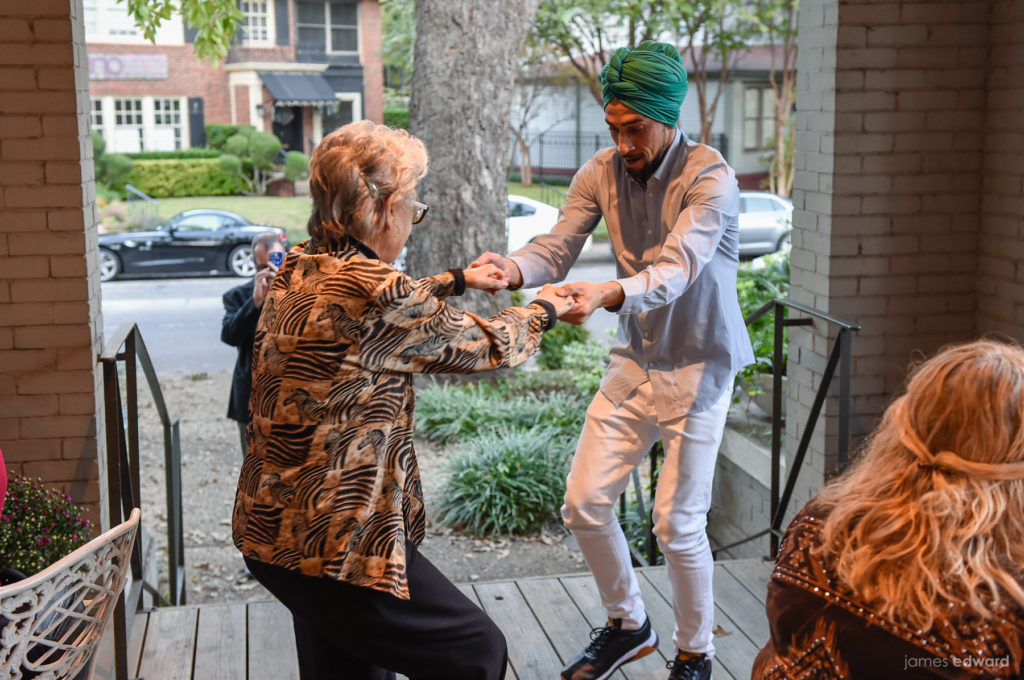Animal-Loving Dallas Scholar Discussed During Symposium
Those who knew James Hillman, a pioneering and imaginative psychologist and co-founder of the Dallas Institute of Humanities and Culture, said he was always around animals.
They recall a cat sitting with him at breakfast; a flock of chickens following him around outside his house; or a horse carrying him on one of many rides.
(ABOVE: James Hillman Symposium attracts a variety of scholars. Photo: James Edward)
“We need the animals, says Laurens van der Post, because animals are reflections of ourselves,” Hillman wrote in his work Animal Presences. “An animal, says the Zohar is ‘the highest grade of angel.’”
Hillman’s death in 2011 didn’t keep those who read and subscribe to his work from engaging in discussion. For the seventh consecutive year, dignitaries and scholars met to discuss Hillman, who is considered the originator of archetypal psychology and a scholarly contributor to several other fields, including philosophy, mythology, art, and cultural studies.
Animal Presences was the focus as the institute presented this fall’s James Hillman Symposium.
Animal spirits was an area of huge interest to Hillman, who wrote about what he called the “culture and the animal soul.”
Connecting with animals, Hillman taught, was one of the most important things humans could do. He saw it as a way to reach “a more sensitive, more artful and more humorous place in the psyche.”
“I am suggesting that we dream interpreters not reduce the dream to the symbol but reduce ourselves, our own vision, to that of the animal. . .” -James Hillman
(ABOVE: Participants took a break from their discussions to beat on drums and dance. Photo: James Edward)
Numerous educators, novelists, publishers, and analysts – many with backgrounds in anthropology and psychology – spoke during the two-day event, including Klaus Ottmann, publisher and editor of Spring Publications, and Margot McLean, a New York City artist who collaborated with Hillman on many projects.
Ottman, who read excerpts from Hillman’s book during the symposium, spoke about the public’s perception of animals in art. Hillman, he said, always viewed animals in a different way, which is evident in his pieces.
“There are animals everywhere in art, but people often view the animals as an aside,” Ottman said. “They’ll be sitting in someone’s lap, or they’re off to the side, or whatever. Artists almost try to sneak them in. But [McLean] and James always make them a focal point.”
Hillman earned his doctorate in 1959 at the University of Zurich, where he studied with Carl Jung and later served as the first director at the C. G. Jung Institute until 1969. The scholar served several years as dean of graduate studies at the University of Dallas and was known to collect people’s dreams about animals.
“We would talk about the invisible world of dreams, and what role animals would play in our dreams,” McLean said. “It was a really important subject for James.”
McLean recalled a time when she and Hillman visited a ranch where donkeys lived. Hillman, she said, told her that you had to “share breathe” with animals for them to feel connected to you.
“He bent over the fence and got in the face of this donkey, and just breathed into his face, and the donkey breathed back,” she said. “And just like that, [Hillman] and the animal were just fine with each other. He really had a way with animals.”











